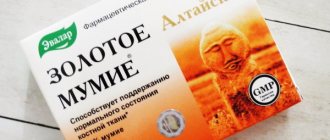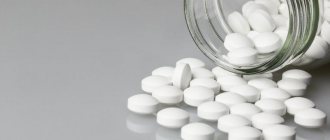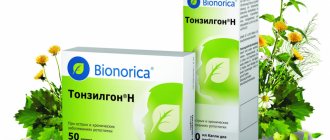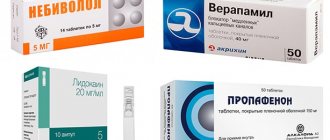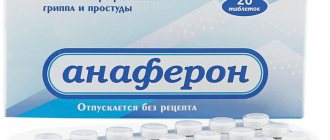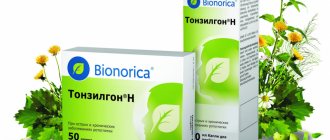Part 1. Classification, plant hepatoprotectors, essential phospholipids
New Year's holidays are over. As a rule, they are accompanied by abundant feasts with a wide variety of dishes and ethanol in all kinds of solutions and mixtures. A large amount of fatty, sweet, and spicy foods puts a strain on the liver, and alcohol, especially taken in large quantities, is its main enemy. Therefore, when the long holidays are over, many people want to “support the damaged organ.” Advertising for hepatoprotectors also calls for this, claiming that the liver needs the protection and help of the user. Many of the drugs in this group are available without a prescription, so the pervostolnik finds himself face to face with a buyer who wants to purchase something “to restore the liver.” Read the article about hepatoprotectors in the pharmacy range, why they are needed and whether it is worth drinking them for prevention.
What are hepatoprotectors?
Hepatoprotectors are drugs whose target is the liver. Their action is aimed at restoring homeostasis in the liver, increasing the organ’s resistance to pathogenic factors, stimulating its regeneration and, as a result, restoring its functional ability.
Classification of hepatoprotectors
There is currently no unified classification of hepatoprotectors. Let us present the most convenient and practical division of hepatoprotectors by origin and primary mechanism of action, based on the classification according to S.V. Okovitou (2008).
Table 1. Classification of hepatoprotectors
| Groups | Representatives | ||
| Herbal preparations | Based on milk thistle | Karsil, Legalon, Silimar | |
| Based on other plants | Artichoke based | Hofitol | |
| Based on Norway spruce | Ropren | ||
| Based on pumpkin seed oil | Tykveol | ||
| Multicomponent | Liv-52, Dipana, Gepabene, Sibektan | ||
| Preparations of animal origin | Based on animal liver | Hepatosan, Progepar | |
| Based on placenta extract | Laennec | ||
| Preparations containing essential phospholipids | Based on soybean phospholipids and their combinations with other active substances | Essentiale Forte N, Phosphogliv, Essliver, Phosphonciale, Eslidin, Essential phospholipids | |
| Bile acid preparations | UDCA - ursodeoxycholic acid | Ursosan, Ursofalk, Urdoxa, Exhol, Ursodez, Ursoliv, Grinterol | |
| Preparations with a predominantly detoxifying effect | Direct action | Glutamine-arginine | Glutargin |
| L-ornithine-L-aspartate | Hepa-Merz | ||
| Indirect action | Reducing the formation of endogenous toxicants (lactulose) | Duphalac, Normaze | |
| Activating the formation of endogenous detoxicants (ademetionine, Remaxol) | Heptral, Heptor, Remaxol | ||
| Accelerating the metabolism of toxicants (methadoxine) | Metadoxyl | ||
| Drugs of other groups | Thioctic acid, vitamins, antioxidants | Berlition, Thioctacid, Octolipen, Thiogamma, Espa-Lipon, vitamin E, vitamin C, B vitamins, Mexidol | |
| Homeopathic medicines | ~ | Hepar compositum | |
When are hepatoprotectors taken?
Most drugs are registered and used for pathogenetic treatment of existing liver pathology:
- alcoholic liver disease
- toxic and drug-induced liver damage
- non-alcoholic fatty liver disease
- viral hepatitis (in combination with etiotropic therapy)
- and other diseases of the hepatobiliary system, in which the liver parenchyma is destroyed and its function is disrupted.
However, there is a practice of prescribing hepatoprotectors for prevention, for example, in order to reduce the toxic effect of drugs - antibiotics and cytostatics.
Is it worth taking hepatoprotectors on your own, for prevention and when (before, during, after a feast) and what should you advise the buyer?
The liver is a very grateful organ. If favorable conditions are created after exposure to damaging factors, it is capable of self-healing in case of significant damage. To do this, you need to eliminate alcohol, limit the consumption of sugar, fatty and spicy foods. Therefore, if a pharmacy visitor does not abuse alcohol and allowed himself to eat and drink too much during the holidays, there is no reason to worry.
Taking a hepatoprotector once before, during or after a feast will be useless. Hepatoprotectors are taken as a course for existing liver problems. In case of obvious manifestations, you should consult a doctor who will prescribe treatment taking into account the cause, the presence of an inflammatory process, cholestasis, the degree of liver damage, and the presence of concomitant diseases.
It's another matter if the liver is regularly exposed to alcohol. Knowing this, a person wants to “support” the liver. Pathological changes in the liver may not appear externally for a long time. Secondary prevention involves taking hepatoprotectors, also in a course, but this does not guarantee that with regular alcohol consumption, even under the “cover” of hepatoprotectors, the liver will stop deteriorating.
If the buyer believes that he needs a hepatoprotector without medical recommendations to “support” the liver, you can choose an over-the-counter drug, explaining that it is being taken in a course, warning about possible contraindications.
In general, to keep the liver healthy, the best way is to reduce the dose or completely abstain from alcohol, a balanced diet and physical activity.
Special mention!
- There are over-the-counter hepatoprotectors that can provoke or intensify cholestasis, which can accompany various diseases of the liver and biliary tract (cholesterolitis, viral hepatitis, cirrhosis, etc.). Cholestasis can form due to alcohol abuse and toxic liver damage. “Cholestatic” drugs include milk thistle-based drugs and essential phospholipids. The drugs of choice for cholestasis will be the prescription drugs UDCA and ademetionine (the latter has an over-the-counter TN).
- Over-the-counter hepatoprotectors with a choleretic effect, for example, Hofitol and Liv.52, can aggravate the course of cholelithiasis. UDCA drugs are prescribed to dissolve cholesterol stones, but are contraindicated for calcified stones, so only a doctor can prescribe them. If you have gallstones, milk thistle preparations are allowed.
Table 2. Prescription status of dispensing from the pharmacy
| Oral forms | |
| Preparations of animal origin | |
| Hepatosan | over the counter |
| Progepar | on prescription |
| Herbal preparations | |
| Karsil, Tykveol, Silimar, Legalon, Khofitol, Liv 52, Dipana, Gepabene, Sibektan | over the counter |
| Karsil Forte, Ropren | on prescription |
| Preparations of essential phospholipids | |
| Essentiale Forte N, Essliver Forte, Eslidin, Phosphonziale, Essential phospholipids | over the counter |
| Phosphogliv, Phosphogliv Forte | on prescription |
| UDCA preparations | |
| All UDCA preparations | on prescription |
| Ademethionine preparations | |
| Heptral tablets 400 mg. | over the counter |
| Heptral tablets 500 mg, Heptor | on prescription |
| Preparations of other amino acids | |
| Hepa-Merz | on prescription |
| Glutargin | on prescription |
| Lactulose preparations | |
| Duphalac, Normaze | |
| Thioctic (alpha-lipoic acid) preparations | |
| Berlition, Thioctacid, Octolipen | on prescription |
| Metadoxine | |
| Metadoxyl | on prescription |
| Injection forms | |
| Essentiale, Essliver, Phosphogliv, Heptral, Laennec, Hepar compositum | All injectable forms are available with a prescription |
Let's look at two popular groups of mostly over-the-counter drugs. The remaining hepatoprotectors will become “heroes” of a future publication.
Herbal preparations
The most popular and well-known preparations based on milk thistle are Silimar, Legalon, Karsil. The active principle of milk thistle preparations is a flavonoid complex of silymarin isomers, the main of which is silibinin. Silymarin is able to stabilize hepatocyte membranes and reduce their permeability. Thus, silymarin prevents the destruction of liver cells. In addition, silymarin prevents the penetration of toxic agents into hepatocytes, in particular, it is effective against the venom of the toadstool. The antifibrotic effect of silymarin has been described. Milk thistle preparations can be used to prevent toxic liver damage. The disadvantages of milk thistle preparations are the low bioavailability of silymarin when taken orally (for generics it can be 20%), the risk of increased bile stagnation, and an estrogen-like effect.
Another fairly widely used herbal hepatoprotector based on artichoke is Chofitol. The flavonoids and phenolic acids included in the drug determine its antioxidant activity. The hepatoprotective effects of artichoke and silymarin are approximately the same. Hofitol also has choleretic and cholekinetic, hypolipidemic and mild potassium-sparing diuretic effects. Its use is effective for liver diseases, especially in combination with renal pathology, for toxicosis and liver dysfunction in pregnant women. Hofitol should not be taken if you have gallstones, obstruction of the bile ducts, or acute liver and kidney diseases.
Liv.52 contains a complex of herbs used in Indian folk medicine. It has a protective effect on liver cells, a choleretic effect, normalizes the protein-synthetic function of cells, stimulates their recovery, and improves digestion. Can be used both for the prevention and treatment of liver diseases. However, the use of the drug for acute liver diseases can intensify inflammatory processes. One randomized study conducted in the United States provided data on lower survival rates in patients with alcoholic hepatitis who took Liv.52 than in the placebo group.
Therefore, the drug can be recommended only with minimal manifestation of the inflammatory syndrome, the obvious signs of which are pain and heaviness in the right hypochondrium, increased temperature, and an increase in the size of the liver.
Preparations based on and containing other plants are used (but not so widely): pumpkin, spruce, licorice, solyanka, smokeweed, etc.)
Preparations of essential phospholipids
These are drugs that are often prescribed and requested at pharmacies. Essential phospholipids serve as a source of structural elements of liver cell membranes. Essential phospholipids have a strong antioxidant effect while protecting healthy hepatocytes and repairing damaged ones. Preparations containing essential phospholipids are used both for the treatment of liver damage (including alcohol and drugs) and as a “cover” for treatment with hepatotoxic drugs.
Essential phospholipids require high doses due to low oral bioavailability. May provoke cholestasis and allergic reactions in persons intolerant to soy and peanuts. There are a lot of trade names of drugs in this group. Essential phospholipids can be included as a single component or in combination with vitamins (Essliver), glycyrrhizic acid (Phosphogliv), methionine (Eslidin), milk thistle (Fosphonciale).
Both tables given in the article are available for download as an Excel file via the link.
We answer questions live on VKontakte: https://vk.com/pharmznanie
You can discuss the latest news with all your Russian colleagues in chats: Telegram: https://tglink.ru/pharmordenVKontakte: https://vk.me/join/AJQ1d_D2XxaDy9IdzL0e6EqH To leave a comment on the article, you need to register or log in.
Interested in the article? You can find out even more in the section Working in a pharmacy
Release form and composition
The following dosage forms of Milk Thistle are produced:
- Tablets (60 or 90 pieces in polymer jars; 10, 15 or 20 pieces in blister packs, 3 or 10 packs in a cardboard pack);
- Capsules with milk thistle extract (30, 60 or 90 pieces in polymer jars);
- Powder for oral administration (in polypropylene bags);
- Oil for oral administration (50 ml bottles).
1 capsule contains the active ingredient: milk thistle extract – 0.3 g.
1 tablet contains:
- Active ingredient: dry milk thistle extract – 0.065 or 0.5 g;
- Auxiliary components: calcium stearate, talc, microcrystalline cellulose.
The powder contains the active ingredient silibinin (milk thistle fruit extract).
The oil for oral administration contains the following active ingredients:
- Fats – 10.9% (including fatty acids: palmitic – 12.36%, stearic – 4.45%, oleic – 23.4%, linoleic – 55.6%, linolenic – 3.0%);
- Protein – 17.4%;
- Essential oils – about 1%;
- Minerals;
- Carotenoids;
- Mono- and disaccharides;
- Tocopherols;
- Enzymes;
- Biogenic amines.
Growing
Milk thistle, like any other weed, does not require special attention. At the same time, it is resistant to drought and frost, and is also characterized by rapid growth; by mid-summer the plant will reach its maximum size.
Despite its unpretentiousness, milk thistle loves loose, slightly acidic soil. It is better to plant it in areas where perennial grasses or grain crops were previously cultivated. And after sowing the seeds, you need to make sure that there are no weeds.
Indications for use
- Diseases of the biliary tract: cholelithiasis, dyskinesia, cholangitis, cholecystitis;
- Gallbladder diseases;
- Liver cirrhosis (as part of complex treatment);
- Chronic hepatitis;
- Toxic liver damage of various origins: heavy metal compounds, halogen-containing hydrocarbons, alcohol, drugs (for prevention and therapy);
- Conditions after infectious and toxic hepatitis;
- Dystrophy and fatty infiltration of the liver;
- Lipid metabolism disorders.
Additionally for oil:
- Dysbacteriosis;
- Haemorrhoids;
- Phlebeurysm;
- Disturbances of metabolic and reparative processes in the body;
- Atherosclerosis.
Honey productivity of milk thistle
Among the plants that represent summer honey plants, milk thistle is not very productive: from 1 hectare, depending on the climatic zone, up to 40-100 kg of honey is collected (thus, its value lies precisely in its healing properties). Nectar-bearing tissue is located deep in the flower. It should be noted that bees visit the plant quite willingly, and the collection of nectar and pollen occurs throughout the day - from the morning hours to sunset.
Contraindications
Taking Milk Thistle is contraindicated for children under 12 years of age, as well as for those with hypersensitivity to the components included in the dietary supplement (BAA).
The dietary supplement is used with caution for hormonal disorders: carcinoma of the prostate, breast, ovaries and uterus; uterine fibroids; endometriosis.
During pregnancy and during breastfeeding, the use of dietary supplements is permissible only in cases where the expected effect of therapy significantly exceeds the possible risk to the developing fetus or infant.
Kinds
There are more than 100 varieties of milk thistle in nature, but the most famous types include:
Milky - a distinctive feature of this species is white spots on the leaves, as if milk had been spilled on them;
Curly - the plant is widespread in Western Siberia, distinguished by the absence of spines on the stem of the basket;
Drooping - a plant with a straight, slightly branched stem and flowers without thorns.
Some varieties of milk thistle are specially grown for medicinal purposes. These are “Debut” with a high oil content, “Boykovchanka” with a large amount of silymarin, as well as “Amulet” and “Panacea”.
Directions for use and dosage
Tablets Tablets are taken orally 30 minutes before meals, washed down with a sufficient amount of water: 1 piece. 2 times a day. Duration of therapy is 30 days, with a possible repetition of the course after 1-3 months.
Capsules Capsules are taken orally with meals. The dosage of the dietary supplement is 5 capsules 2 times a day. The duration of therapy is 30 days.
Powder for oral administration The powder is taken orally during meals with plenty of water. The dosage of Milk Thistle for adults is 1 teaspoon (3.5 g) once a day. Duration of therapy – 1 month.
Oil for oral administration Oil is taken orally 30 minutes before meals. The frequency of administration is 3 times a day. As a means of prevention, take 1 teaspoon of oil 2 times a day (especially before eating fatty or fried foods or drinking alcohol).
Description
Milk thistle is a herbaceous plant that is a member of the Asteraceae family, and is closely related to dandelion and thistle. The plant may be an annual or biennial with white veins on the leaves.
The scientific name of the plant is Sílybum marianum. Translated from Latin, Sílybum means brush or brush, but mariánum is an adjective given in honor of the Virgin Mary. There is a legend that the white veins on the leaves of milk thistle are drops of mother's milk from the Mother of God.
Milk thistle is a thorny plant. Its stem is straight, but weak branching can be observed, up to 1.5 m high. Milk thistle is distinguished by its large leaves up to 30 cm wide and up to 80 cm long, with yellowish small spines along the edges.
How to distinguish from a fake
Since milk thistle honey is a rare product, but has valuable medicinal properties, some unscrupulous sellers often try to sell a falsified version of it instead of the real product:
- in the best case, natural honey of a less expensive variety is offered for purchase, not harmful to health, but also endowed with much less positive qualities;
- in another case, artificial honey may be sold with the addition of various additives: starch, molasses, and other impurities;
- Under the guise of good quality honey, honey that has lost its quality as a result of improper storage may be offered for sale.
To avoid becoming a victim of scammers, you must:
- purchase honey in specialized stores, always requiring the seller to present a quality certificate; contact only trusted beekeepers whom you completely trust.
How to distinguish which honey is real and of high quality, and which is fake? There are several external signs that indicate the naturalness of honey:
- it should be light, but not completely white (this may indicate the presence of sugar syrup);
- the aroma is subtle, but at the same time rich and persistent;
- Milk thistle honey is very sweet, almost cloying, without bitterness;
- The consistency is liquid for up to 2 months from the moment of pumping, then crystallization and sugaring gradually occur.
If the product has already been purchased, but there is no confidence in its naturalness, you can conduct several experiments at home:
- Experiment No. 1. Take a regular glass. Pour water into it. Dilute a small amount of honey and add 3 to 4 drops of iodine. Is there an admixture of starch? The liquid will turn blue.
- Experiment No. 2. Conducted at a temperature not lower than +20ºС. Insert a spoon into the container with honey and begin to twist it quickly, trying to wrap the product around the spoon. Real honey will roll easily.
- Experiment No. 3. Dip a piece of bread in honey. Leave it in the jar for a quarter of an hour. After the specified time has passed, remove the bread. Is the piece soft? This is an indicator of the presence of sugar syrup.
Be careful when choosing.
Beneficial features
Milk thistle honey is considered one of the most valuable varieties. Thanks to its use, it is possible to achieve a number of beneficial effects:
- Improve liver function. This product helps with inflammation of the liver and bile ducts. The substance has hepatoprotective properties, avoids organ destruction and accelerates its recovery. It is permissible to use the product to restore normal bile synthesis.
- Improve the condition of hepatitis C. Milk thistle honey cannot be called a medicine that helps eliminate this dangerous viral disease. At the same time, in the initial stages of pathology, the product helps stop the proliferation of pathogens and alleviate symptoms.
- Strengthen the body with a weakened immune system and vitamin deficiency. The product helps to recover from a long illness and prevent viral infections.
- Improve the functioning of the nervous system. The beekeeping product is useful for stress, unstable emotional state and sleep disorders. Honey contains quercetin, which has a calming effect. In addition, this variety helps improve brain function and avoid the development of complex neurological pathologies.
- Normalize metabolism and digestive functions. It is recommended to eat a small amount of honey if you are prone to constipation, slow digestion of food and intestinal spasms. The product stimulates the absorption of beneficial elements that come with food and cleanses the body of accumulated toxins.
- Reduce joint pain. The beekeeping product has pronounced anti-inflammatory properties. Therefore, it can be used for arthritis, arthrosis, rheumatism. The composition eliminates pain and helps get rid of local swelling.
Beekeeping products are especially beneficial for women.
Its systematic use has a beneficial effect on appearance and helps slow down the aging process.
Milk thistle honey is useful for the following disorders:
- blood pathologies - the substance increases the number of platelets in the blood plasma;
- violation of metabolic processes;
- pathologies of the liver and gallbladder - the substance helps improve the flow of bile and strengthen the protective functions of the liver;
- disturbances in the functioning of the nervous system - the composition helps to cope with insomnia and increased anxiety;
- haemorrhoids;
- radiculitis and other joint pain.
See also
Is it possible or not to pour boiling water over honey, is it beneficial or not and the properties of the productRead
Application in cosmetology
In cosmetology, honey is used to solve the following problems:
- To improve hair growth. In this case, you need to heat 2-3 tablespoons of the product to +40 degrees. It is advisable to use a steam bath for this. The finished composition must be applied to the scalp, put on a plastic shower cap, and wrap it in a towel. After half an hour, the composition must be washed off. It is recommended to carry out the procedure daily for 10 days.
- To eliminate acne, facial and age wrinkles. In this case, you need to take 1-2 tablespoons of honey and distribute evenly over your face. After 20 minutes, you need to wash off the mask with warm water.
- For massage. The required amount of the substance must be applied to the body and slowly rubbed into the skin. When the shade of honey turns grayish, it must be washed off.
Selection rules and storage features
Rare varieties of beekeeping products are often replaced with cheaper varieties. Many beekeepers give the bees sugar syrup or add impurities to the fresh product. These include, in particular, flour, starch, and molasses. To identify a natural product, you should pay attention to the following features:
- Since the milk thistle honey product is considered very rare, it is quite expensive;
- natural milk thistle honey has a sweet and sugary taste, a light floral aroma with tart notes, a light yellow or dark amber tint;
- the reaction to an iodine solution helps identify starch.
Milk thistle honey should be stored in a dry and dark place. The optimal temperature is +5-20 degrees. Glass jars are best suited for this purpose. At the same time, it is impossible to keep beekeeping products in metal containers. This provokes the release of toxic substances.
Milk thistle honey is considered a very tasty and healthy product that has a complex effect on the body. In order for the composition to bring only benefits to the body, it is important to use it correctly, strictly following the dosage.
Features of the plant
Milk thistle thickets can be found all over the world except Australia and Antarctica. Its homeland is the Mediterranean. In our country, it is more common in the Caucasus, the southern regions of Russia and the south of Western Siberia. Summer residents sometimes grow it as an ornamental plant, but more often gardeners and gardeners know it as a malicious and aggressive weed.
In addition to wild thickets, milk thistle is actively cultivated as a medicinal plant. China holds the lead in terms of growing area. There plantations occupy more than 100 thousand hectares. In Russia it is cultivated on 10,000 hectares.
In cultivation, milk thistle is used as an annual plant; in the wild it grows as a biennial plant. It reaches a height of one and a half meters. The stem is bare, can be simple or branched. The leaves are large, pinnate, with small spines along the edges and along the veins. The leaf blade is dark green, shiny, with whitish spots. The flowers are deep lilac, sometimes white and pink, collected in single spherical baskets and wrapped in small spiny imbricated leaves. Flowering begins in mid-July and continues into August.
